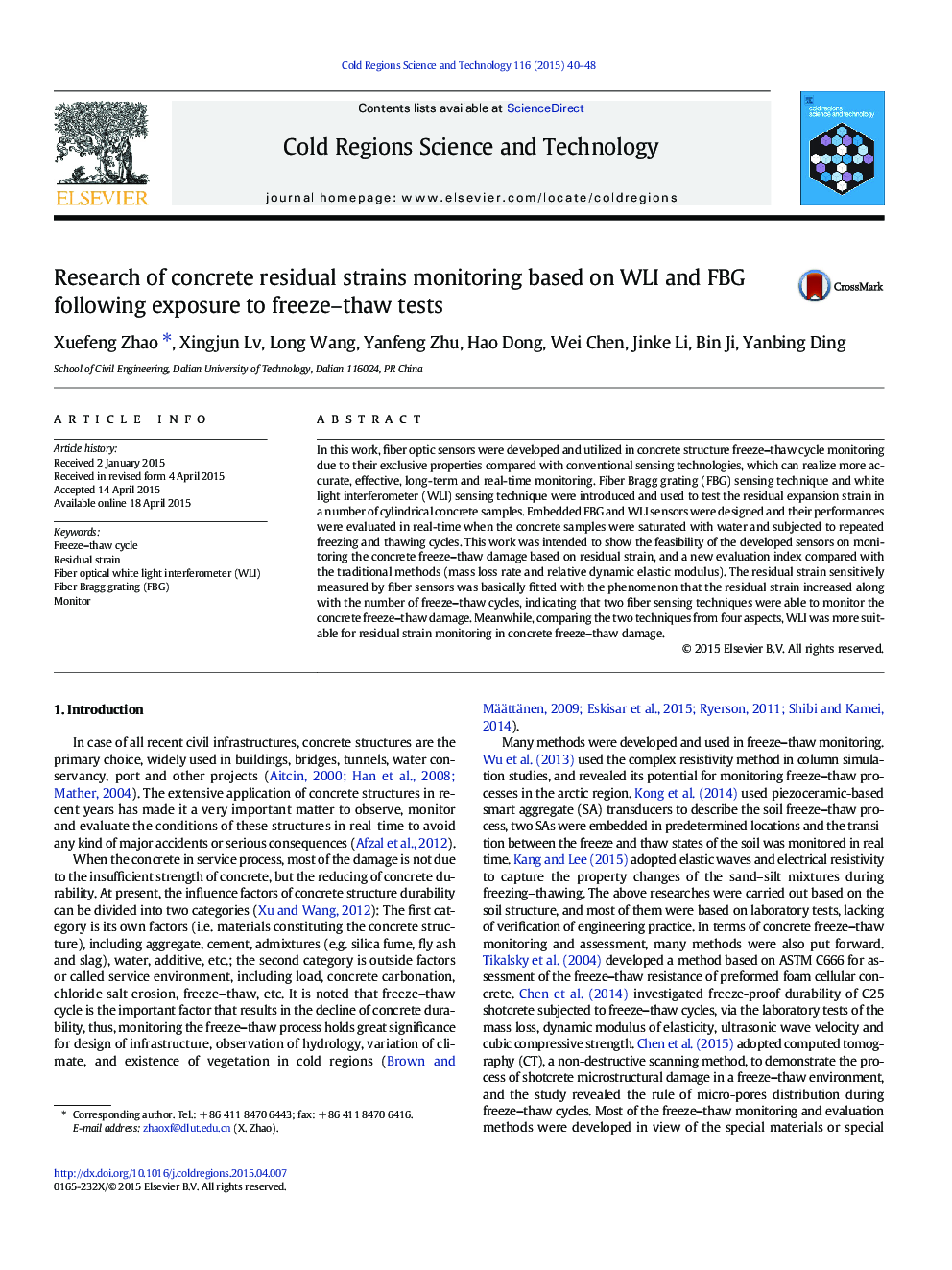| Article ID | Journal | Published Year | Pages | File Type |
|---|---|---|---|---|
| 4675695 | Cold Regions Science and Technology | 2015 | 9 Pages |
•FBG and WLI sensor techniques were introduced.•Designing two novel fiber sensors based on FBG and WLI respectively•Monitoring concrete residual strains when exposure to freeze–thaw cycles•By comparison, WLI freeze–thaw fiber sensing technique is more suitable.
In this work, fiber optic sensors were developed and utilized in concrete structure freeze–thaw cycle monitoring due to their exclusive properties compared with conventional sensing technologies, which can realize more accurate, effective, long-term and real-time monitoring. Fiber Bragg grating (FBG) sensing technique and white light interferometer (WLI) sensing technique were introduced and used to test the residual expansion strain in a number of cylindrical concrete samples. Embedded FBG and WLI sensors were designed and their performances were evaluated in real-time when the concrete samples were saturated with water and subjected to repeated freezing and thawing cycles. This work was intended to show the feasibility of the developed sensors on monitoring the concrete freeze–thaw damage based on residual strain, and a new evaluation index compared with the traditional methods (mass loss rate and relative dynamic elastic modulus). The residual strain sensitively measured by fiber sensors was basically fitted with the phenomenon that the residual strain increased along with the number of freeze–thaw cycles, indicating that two fiber sensing techniques were able to monitor the concrete freeze–thaw damage. Meanwhile, comparing the two techniques from four aspects, WLI was more suitable for residual strain monitoring in concrete freeze–thaw damage.
